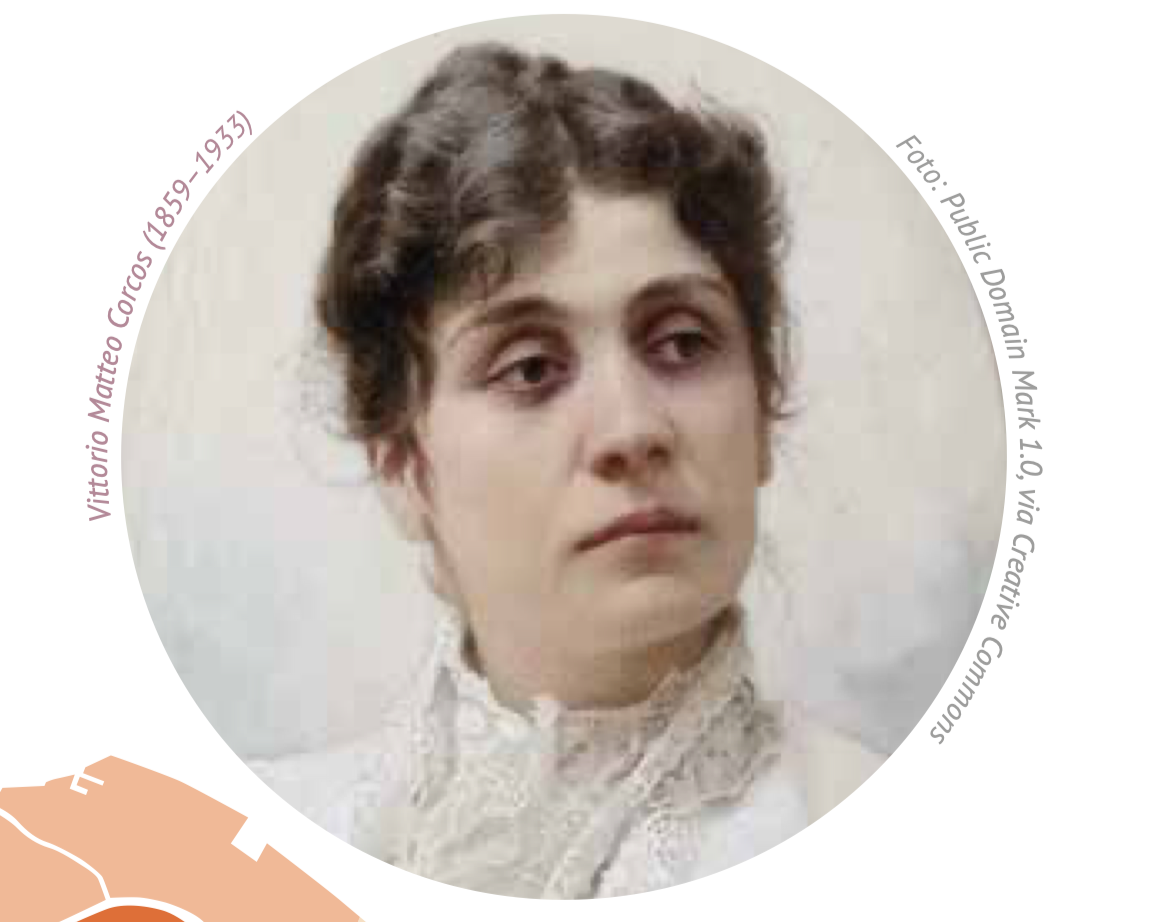(THIS ARTICLE IS MACHINE TRANSLATED by Google from Norwegian)
In this travelogue, with photographs taken by the author Cesilie Tanderø herself, we get to take part in her experiences and interviews with women in Venice. We also get an insight into the lives of women from historical times.
The book is part of the book series Le Donne: The Women and the City, where a total of 90 Italian women tell of life in the cities of Venice, Rome and Sicily. Tanderø has traveled on holidays, long weekends and for a year with half leave from work. Over the course of ten years, she has been in Venice for a total of 74 days, in Rome for 100 days and in Sicily for 31 days. The interviews were conducted in the period 2014 to 2020.

Peggy Guggenheim
Peggy Guggenheim is one of the women who chose Venice as her home, writes Tanderø. The newly divorced Guggenheim settled there in 1949 with her two dogs, without knowing anyone, and lived there until her death in 1979. Today, the Peggy Guggenheim collection is a modern art museum along the Grand Canal in Venice. She is considered to have been a very special patron of twentieth-century art, which is why she was named an honorary citizen of Venice in 1962.
Tanderø got hold of a gondolier who knew her, the very chief of the gondolier milieu, Amedeo Memo. He told how his colleague, Tony Shalin, almost every night rowed the Guggenheim up the Rio dei Barcaroli, out into the Grand Canal and then the round back. Always with both dogs on board.
Fiolinjenta Oberta
We also get to read about the history of the violin girl Open from a couple of centuries ago, who is one of the orphanage girls who received music lessons from Antonio himself Vivaldi at Ospedale della Pietà. She was left there in a drawer in the wall by her biological mother.
We also have such wall drawers in Vienna. There you can leave your unwanted child completely anonymously. The child is then taken into an orphanage and cared for there. Oberta's mother had slipped a letter into the blanket around her daughter, in which she wrote that she wanted the child to be named Oberta Malaspina, and that she would surely come to get her back one day. Something she unfortunately never did. We also don't know how it went with Oberta.
In between the interviews and the stories about the various women from Venice, Tanderø writes, among other things, about backyard cats and various fish dishes. Then you get the feeling that you are reading from her diary. It is personal, but also relevant to give the reader a larger and more nuanced picture of the city. I understand the thinking behind it. But at times this and the interviews become a bit uninteresting for me.

Eleonora Duse
But in the chapter about the actress Eleonora Duse (1858-1924) she arouses my interest again.
Amazingly, I have never heard of this remarkable actress. She is supposed to have been Italy's answer to Norwegian actress colleague Johanne Dybwad, who is nine years younger. Duse played in Hedda Gabler og Rosmersholm at the National Theater in Kristiania in 1906. She was also bisexual.
Eleonora Duse became his grades, whatever the cost.
She was the daughter of a traveling acting family and joined the theater troupe at the age of four. Later she played in Russia, Europe, South America and the USA. On stage, she wanted to show the truth about women's lives. She had a natural playing style, where she became his grades, whatever the cost. This eventually took a toll on her health. This acting method she adopted can be compared to the American theater director Lee strasbergs 'method acting', which many actors in Hollywood and around the world use today. Marilyn Monroe is a famous practitioner of the method.
As the first actor ever, Duse was invited to a tea party at the White House by the US first lady. She was also invited to Windsor Castle by Queen Victoria. Charlie Chaplin stated that she was "the most beautiful thing I have ever seen on a stage". During the First World War she lost her fortune. And from then on things went downhill for her. But in her older days, she became the first woman to land on the cover of Time Magazine. She died of pneumonia on her farewell tour in the US, at the age of 65.
Romantic ideas
The book does not pose any critical questions about the women in Venice, but that may not fit in with the image Tanderø has of the city. She confirms all romantic ideas and clichés about it, and that makes the book monotonous for me. I wish it wasn't just a glorification of the city, but that it also uncovered some grime. Or was it simply not possible for Tanderø to find something like this above the water in the canals?


